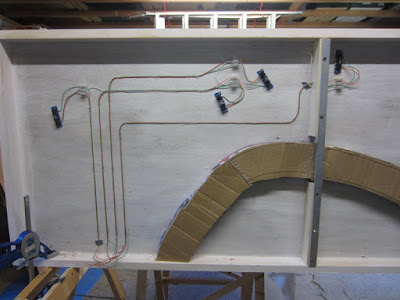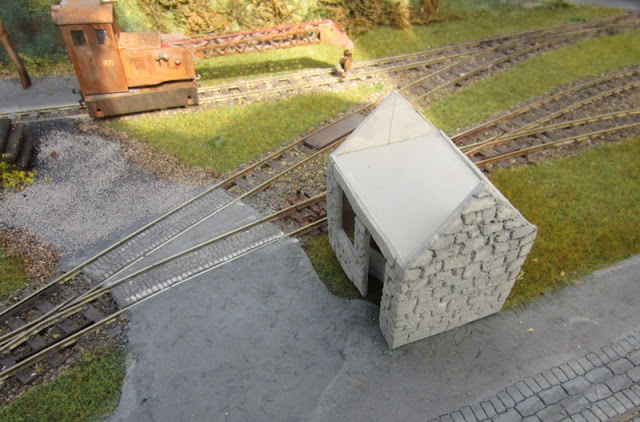No Cardi-Bach news, although there is some interesting stuff about our neighbouring old line, the Rosebush line. It ran from Clynderwen to Fishguard, via Rosebush until the turn of the 19th/20th century, when they ran the line through Clarbeston Road directly to Fishguard.
A lady who lives in Clarbeston has the old GWR signal box from Clynderwen in her garden, and doesn't want it...
Enquiries are afoot to see if the Rosebush gang would be interested. Seemingly it would have been mounted on a brick base. Provenance is hard to establish, but GWR affectionados say it is what it is.
So there.
We would like to offer an honoury membership to 'joppyuk' of Suffolk, who used to live in Eglwyswrw (egg-loyz-sewer-roo) but was dragged away to the land of carrot crunchers.
He very kindly made a donation to the museum in the early days, and has been a follower of our blog from the beginning.
Which segues nicely into this weeks blog...
Not a great deal to write up about in the modelling department, so we will start off with a narrow gauge snippet from Colin, who a year or two ago took a trip up to Aberystwyth, and visited the Vale of Rheidol workshops. They were rebuilding the Talyllyn loco No.3, 'Sir Haydn'
Built in 1878 for the Corris Railway, Talyllyn bought it in 1951 for £25. In 2015 they sent him down to Aber for a refit.
Col managed to get these pictures of the boiler and other bits and pieces being refurbished:
After rebuild Sir Haydn was transported back up through Midwales to Tywyn, and back home to the Talyllyn Railway in time for Founders Day, in May 2018.
(Photo courtesy of Ian Drummond)
More mundane matters -
Dodging the lock-down road blocks, and running the gauntlet of the Dyfed-Powis Heddlu, I called round to Pats to catch up on progress.
The 00 layout has now been ballasted, with a variety of grade and coloured ballast material, stuck down in the time honoured fashion with 50/50 PVA and water, plus a few drops of washing up liquid.
Although it's hard to see in the picture, there are tinges of green, particularly on the rails (in front of the station, if you look closely) We can't reason this. Water quality? the surfactant? I haven't experienced it when I've ballasted, but I don't use soap - meths instead.
Also I don't use proprietary ballast. I use washed sand instead (cheap)
Anyway, in the background Pat has worked on a card rendition of a country inn, cobbling together two buildings and adding timber framing as well as appropriate signage:
Moving onto the scenery, the tunnel mouth and roadway are slowly taking shape-
And if you turn around, this is where it is all constructed (!)
I do like to see a nice tidy workstation...
As this is the kitchen, it all has to be cleared away in readiness for prepping the evening meal.
No such problem with the Teifi Gorge extension, as I now have it in the garage.
Using the support frame I showed in the previous post, I was able to work on the underside of the board, and put the point motors in place:
As you can see, the track is now in place, except for the two sidings. If we look around the back of the board, the four points now have SEEP solenoid motors in place, and wired up-
These are now waiting for a CDU, an electronic doofer that gives an extra shot of power that is needed to operate the point solenoid. (I showed a close-up of one in the last post)
And that, I'm afraid is it for this week - no video - I was going down to take one of the setting sun and the bridge, but looking out of the window, I've left it too late...sorry!
Cherrio till next week.
Thanks for your company, stay safe,
Shaun.
(Thats not really Pats kitchen - it's in the annex, and used as a modelling room)
































